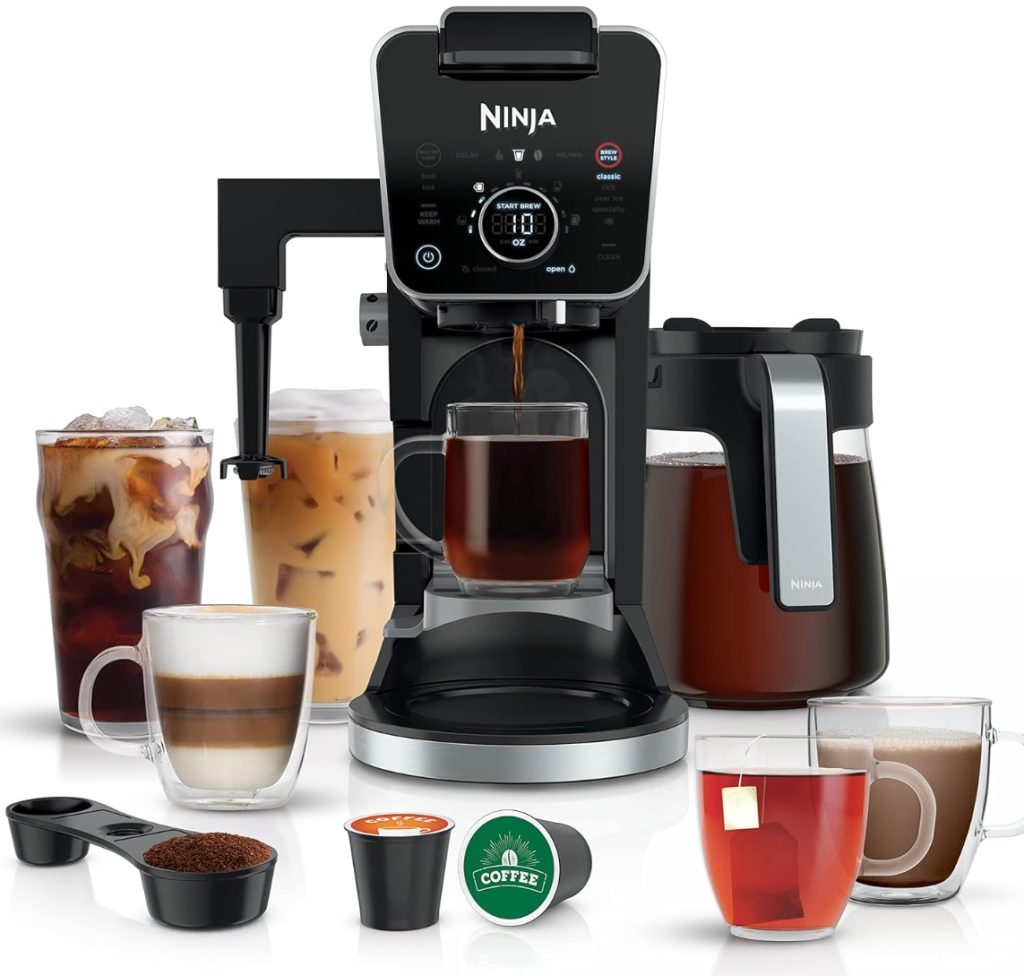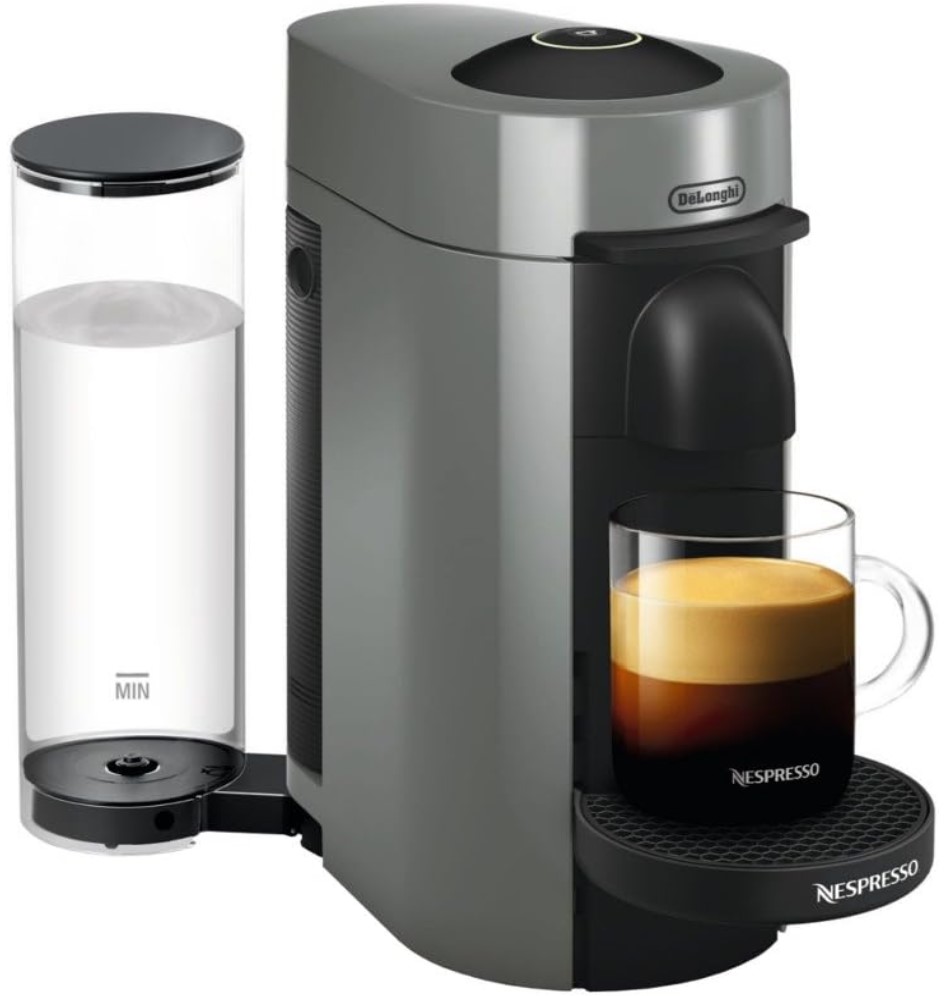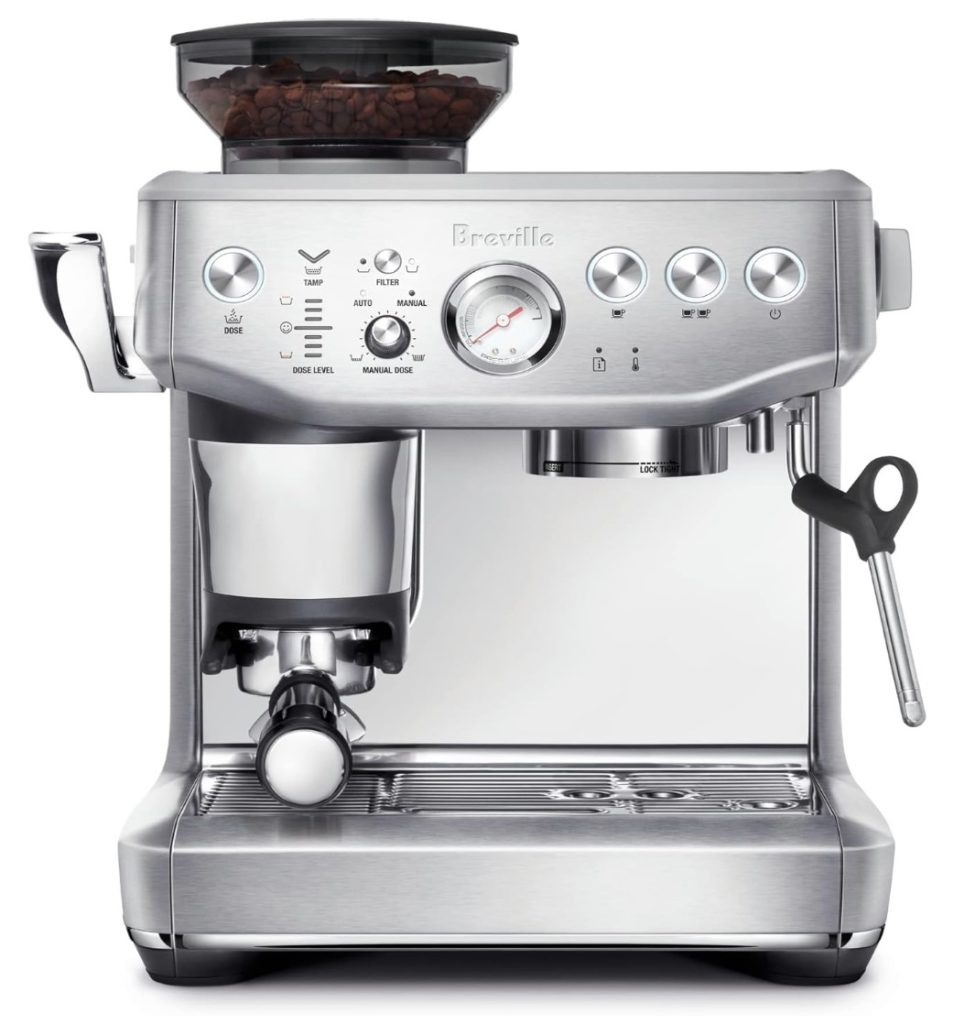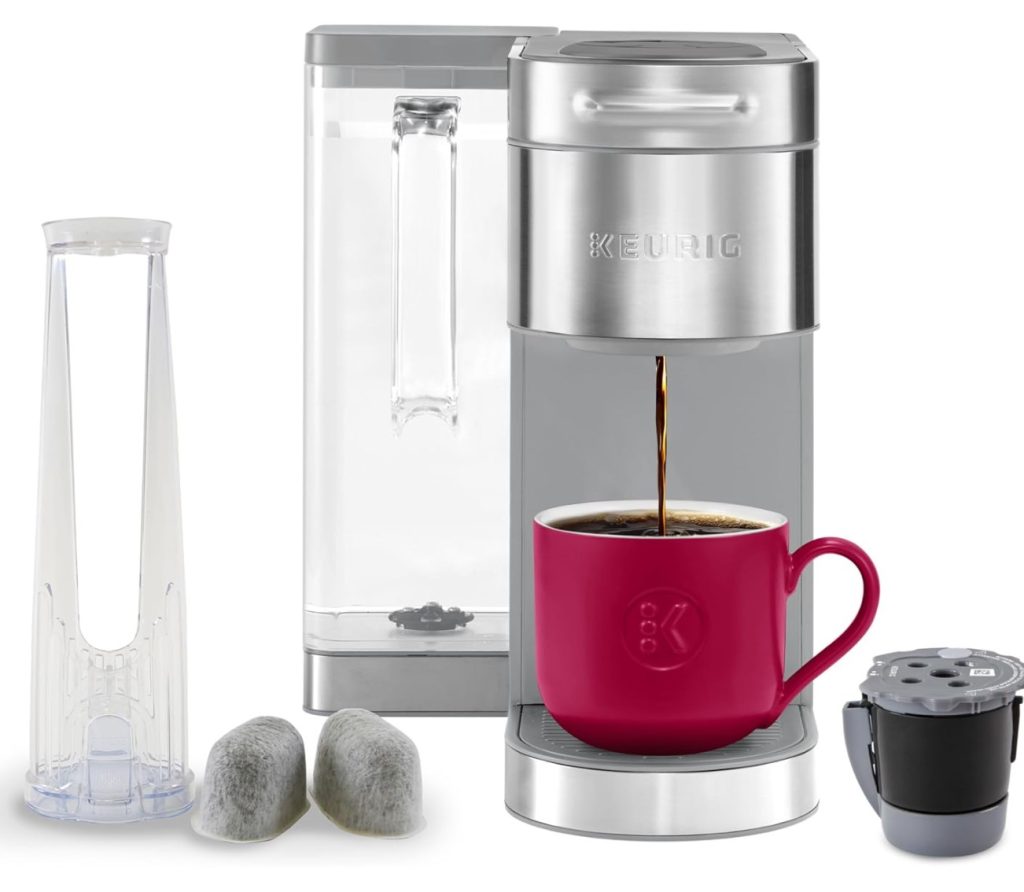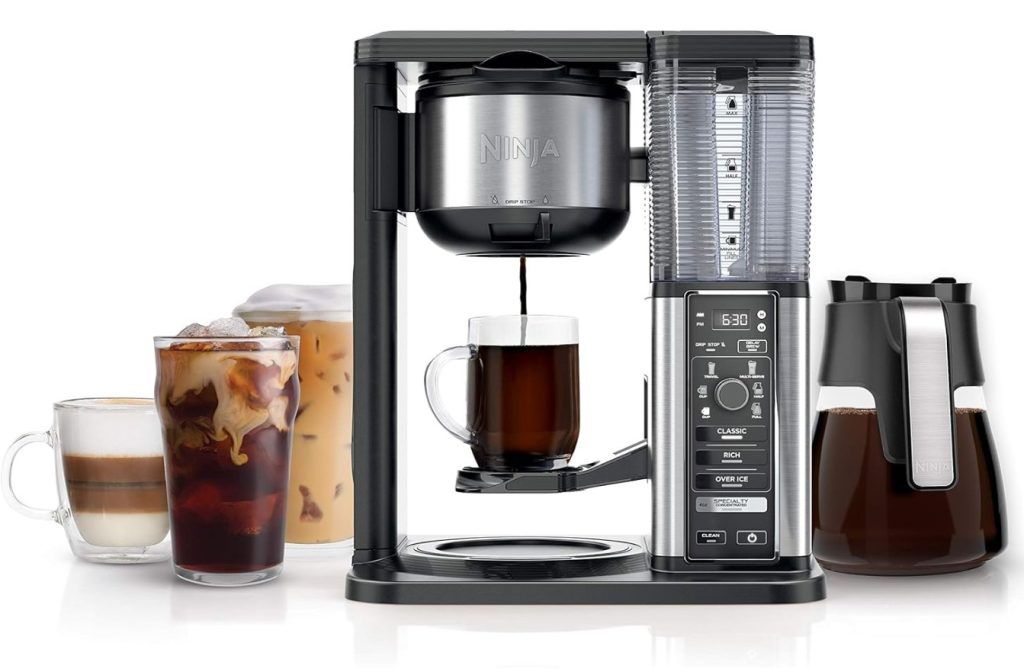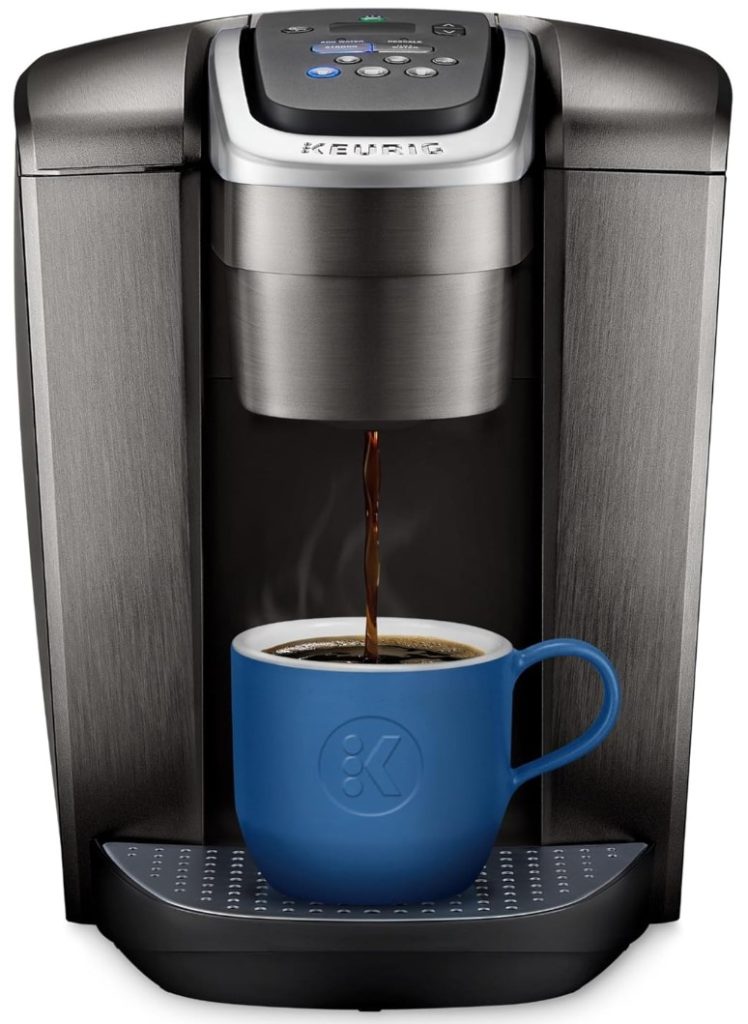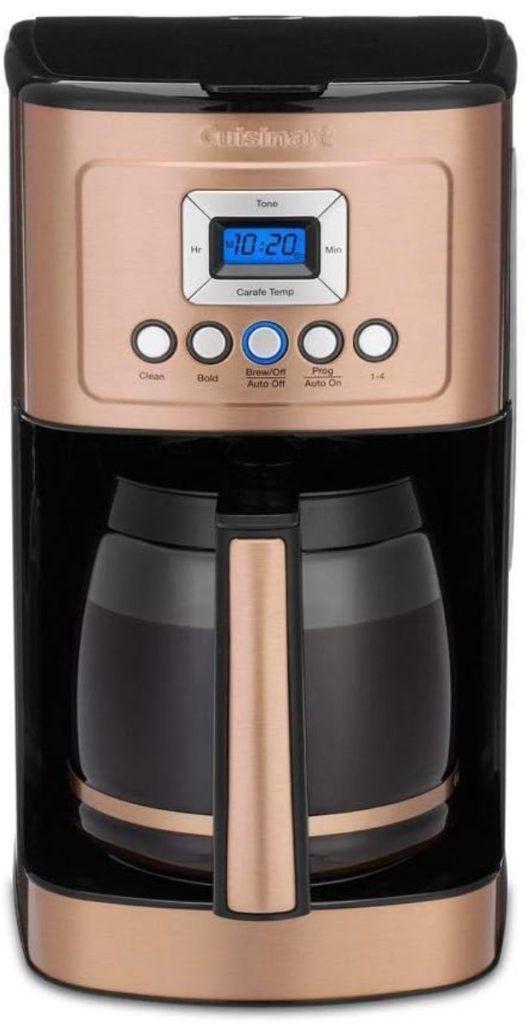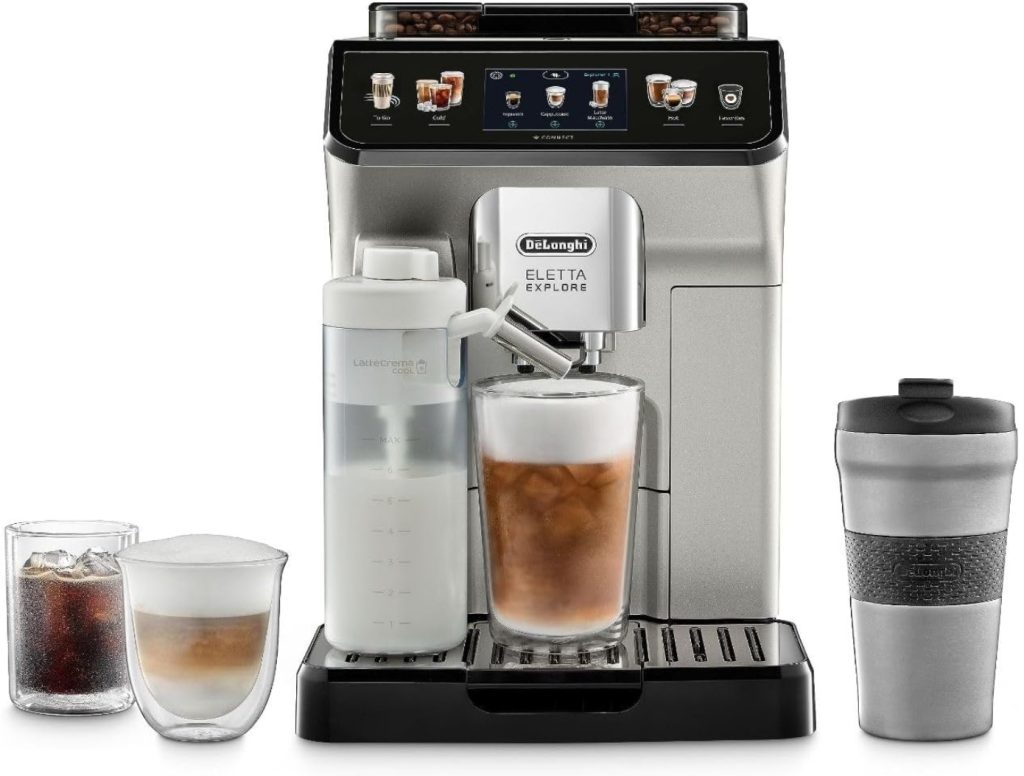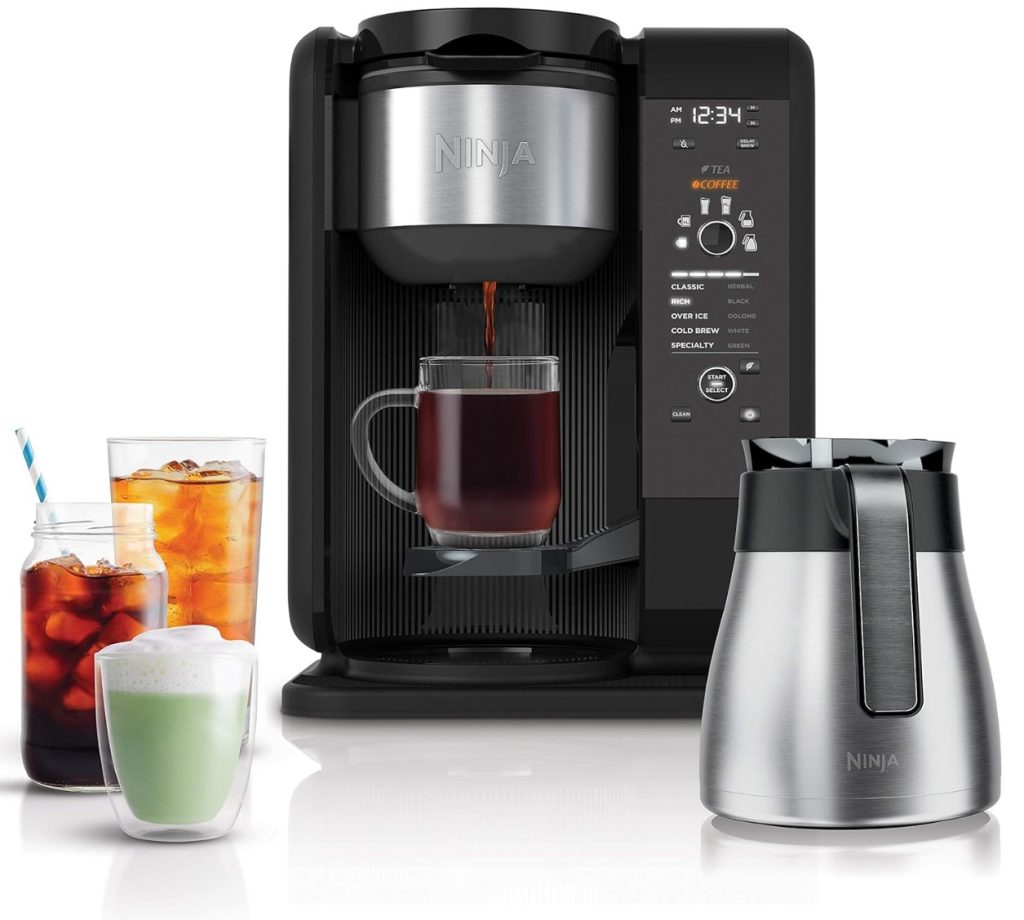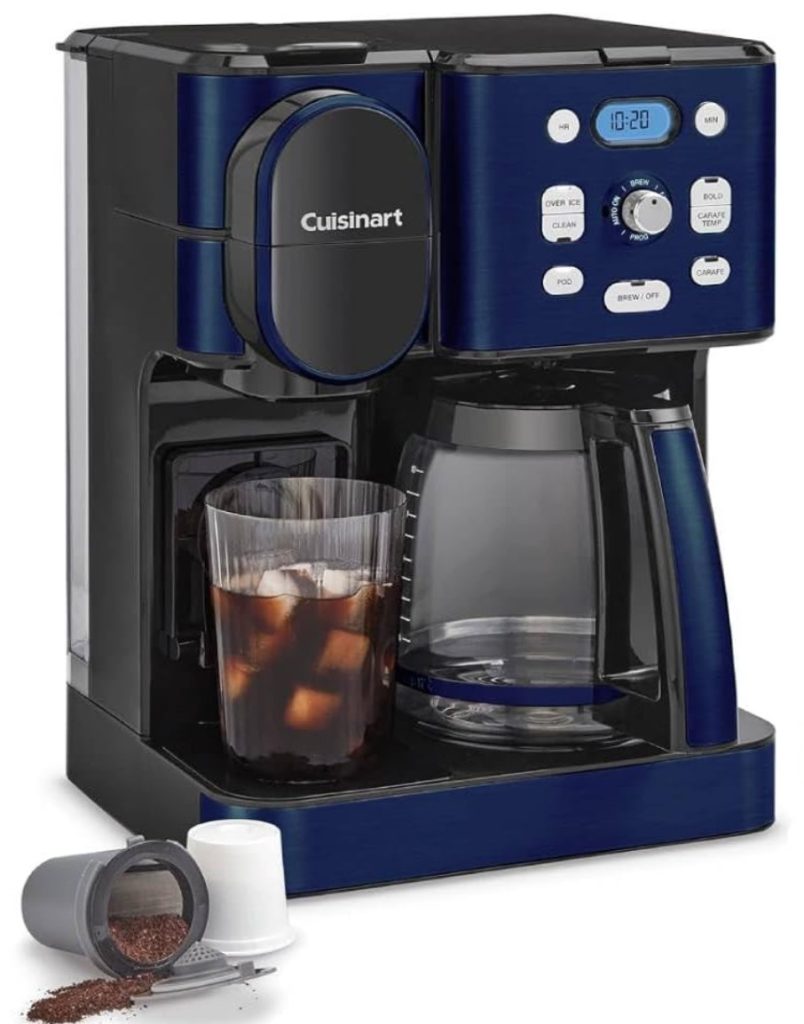Using your coffee maker a lot can make it dirty. Oils, sludge, and mineral deposits can change how your coffee tastes. It’s important to clean your coffee maker to keep your coffee tasting good and to stay healthy.
Carolyn Forté from the Good Housekeeping Institute says to use vinegar every three months. This stops mineral buildup and helps your coffee brew better. Also, wash parts that you can take off often. They get coffee grinds, oils, and drips on them, which can mess up your next cup of coffee.
By following these easy steps, you can make your coffee maker last longer and work better.
A clean kitchen countertop with a modern coffee maker, surrounded by cleaning supplies like vinegar, a sponge, and paper towels, showcasing step-by-step cleaning process elements, bright and inviting atmosphere with morning light streaming through a window.
Key Takeaways
- Regular cleaning removes accumulated oils, sludge, and mineral deposits.
- NSF International found coffee makers to be top germ carriers in homes.
- Carolyn Forté recommends decalcifying with vinegar every three months.
- Wash removable parts regularly to maintain coffee flavor and machine performance.
- Cleaning with items like vinegar and baking soda can ensure a fresh coffee taste.
Why Regular Cleaning is Essential for Your Coffee Maker
Cleaning your coffee maker often is key for your health and great coffee. Moisture in coffee machines is perfect for mold and yeast. A 2011 study by NSF International found yeast and mold in 50% of coffee reservoirs.
A close-up view of a coffee maker being cleaned, highlighting the process of removing mineral buildup. The image should focus on a hand using a natural cleaning solution, with visible mineral deposits being dissolved. Surrounding elements include shiny coffee beans and a well-organized kitchen countertop, conveying a sense of cleanliness and freshness.
Keeping coffee oils and mineral deposits away makes your coffee taste better. Buildup can make coffee taste bitter and even break your machine. This is important to avoid expensive fixes or new machines.
Minerals from hard water can also cause problems. They can lead to longer brew times if not cleaned out.
Keeping your coffee machine clean stops problems like basket overflows. Cleaning it daily takes just a few minutes. Doing deeper cleanings a few times a year can make it last longer.
Using natural cleaners keeps your machine looking good. Regular upkeep makes your coffee maker look as good as the coffee it makes.
In short, cleaning your coffee maker often means better-tasting coffee. It keeps your machine working well and your kitchen healthy. Using natural cleaners and avoiding mineral buildup saves time and money.
How to Clean Coffee Maker
It’s important to clean your coffee maker often. This keeps your coffee tasting great. Here’s how to do it right.
Daily Cleaning Routine
Keep your coffee maker clean every day. It’s one of the germiest places in your home. Here’s what to do:
- Throw away leftover coffee grounds right after you brew.
- Wash parts you can take out with mild soap and warm water.
- Use a damp cloth to wipe the outside.
- Let parts dry well to stop mold and bacteria.
Deep Cleaning and Descaling
Clean your coffee maker deeply every 1-2 months. If it brews slow or tastes bad, it’s time. Here’s how to do it:
- Make a mix of equal parts white vinegar and water.
- Put the mix in the coffee maker’s water tank.
- Start brewing, then stop it for 30-45 minutes.
- Keep brewing until it’s done.
- Run 2-3 cycles of fresh water to get rid of the vinegar.
A bright, modern kitchen scene featuring a coffee maker on the countertop surrounded by cleaning supplies like vinegar, a sponge, and a cloth. The coffee maker is partially disassembled, showcasing its removable parts being cleaned in soapy water. Soft natural light filters through a window, highlighting the cleanliness of the space and reflecting off the shiny surfaces.
Watch for signs your coffee maker needs cleaning. Look for odd noises, bad taste, slow pour, cold coffee, or bad smells. Cleaning it monthly keeps your coffee tasting good.
Alternative Cleaning Methods
Don’t like vinegar? Try these other ways:
- Baking Soda Solution: Mix 1/4 cup baking soda with a cup of warm water. Run it through the machine, then rinse with fresh water.
- Commercial Descalers: These products are made to clean and descale your coffee maker. Look for brands like affresh®.
Each part of your coffee maker needs special care. French presses need a quick rinse but deep cleaning often. Moka pots should never use soap or dishwashers. Stainless steel pots can use baking soda and boiling water for stains. Using filtered water helps keep your machine working well longer.
Conclusion
Keeping your coffee maker clean is key. It makes your coffee taste better and keeps the machine working well. Regular coffee maker maintenance stops bad bacteria and mold from growing. These can live in the coffee maker’s water tank.
A study by NSF International found mold and yeast in 50% of coffee maker tanks. This makes them very dirty places in your home.
Descaling your coffee maker every month is important. It gets rid of mineral buildup from hard water. This buildup can shorten your machine’s life and block its parts.
You can use vinegar, baking soda, or special cleaners to descale. If you use your coffee maker a lot, clean it every one to three months. If you use it less, clean it every three to six months, as your brand suggests.
By cleaning your coffee maker regularly, you’ll get better-tasting coffee. You’ll also avoid health problems. Cleaning a little bit each time means every cup of coffee will be great.https://consentcdn.cookiebot.com/sdk/bc-v4.min.html
